Chrysanthemum Facts and Symbolism
As a symbol that fall is near, chrysanthemums, also known as garden mums, will soon begin filling nurseries and landscapes all over Texas. Garden mums come in mostly orange, gold, burgundy, bronze, red, and yellow, but can also be found in white, pink, and sometimes lavender or violet. While the symbolism of chrysanthemums varies depending on where in the world you live, the general symbolism is usually pretty similar no matter where you live. Usually, chrysanthemums symbolize longevity, fidelity, joy, and optimism. The fact that chrysanthemums grow from fall and into the beginning of winter contributes to its symbolic meaning for longevity.
• Red chrysanthemums symbolize love and deep passion.
• Yellow chrysanthemums symbolize neglected love or sorrow.
• White chrysanthemums symbolize loyalty and honesty.
• Violet chrysanthemums symbolize a wish to get well. (1)
While the chrysanthemum is the official birth flower for those born in November and is highly regarded as the biggest symbol for fall, it belongs to the Asteraceae family, which is family to other well-known flowers like:
• Lettuce
• Sunflower
• Chicory
• Safflower
• Jerusalem Artichoke
• Chamomile
• Gerber Daisy
• Calendula
• Dahlia
• Zinnia
• Coneflower
• Cosmos
• Burdock
• Dandelion
• Goldenrod
And so many more!
Flowers that belong to the Asteraceae family look to have a single flower head, yet, each flower in this family is actually comprised of hundreds or thousands of little tiny flowers that grow out of one head. Consider, for instance, the sunflower head. The sunflower isn’t just one flower, it’s made up of thousands of other tiny flowers which will turn to sunflower seeds.
Much like many of the flowers listed above, garden mums also have been traditionally known for their herbal benefits. While the chrysanthemums sold at nurseries for ornamental flowers are in the Asteraceae family, the species that is used in herbalism are C. morifolium and C. indicum. (2) Herbalists use chrysanthemums for teas, tonics, and astringents.
Types of Chrysanthemums
Single Blooms
Single bloom chrysanthemums are the traditional-looking white or off-white flower with yellow centers, much like daisies.
Quilled Blooms
Quilled bloom chrysanthemums grow petals that resemble spikes or quills.
Spider Blooms
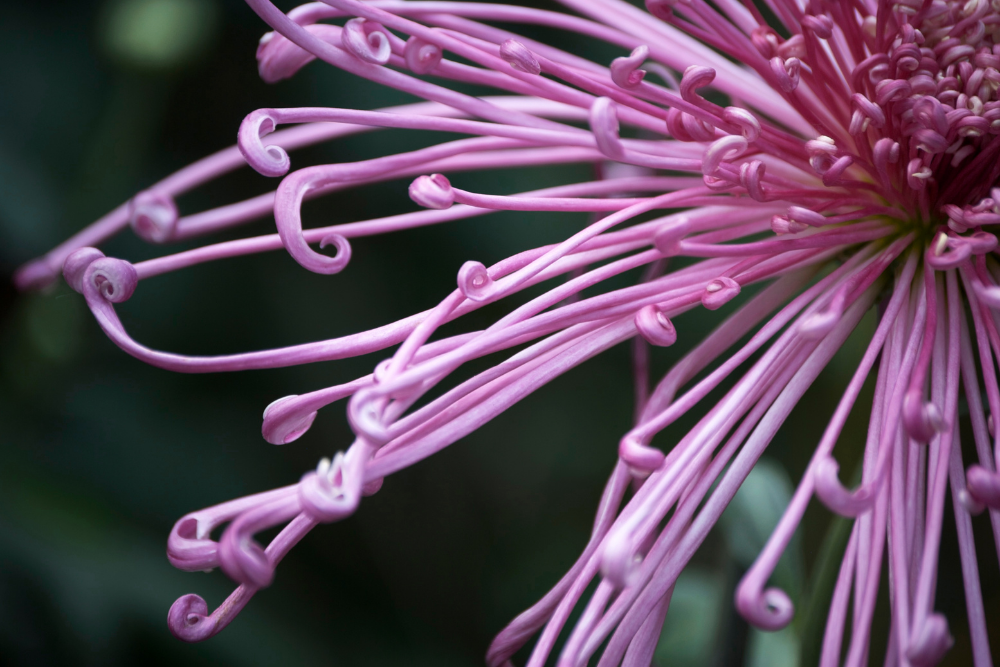
Spider bloom chrysanthemums, much like the quilled bloom variety, have thin petals, only bushier and curled at the ends like spider legs.
Anemone
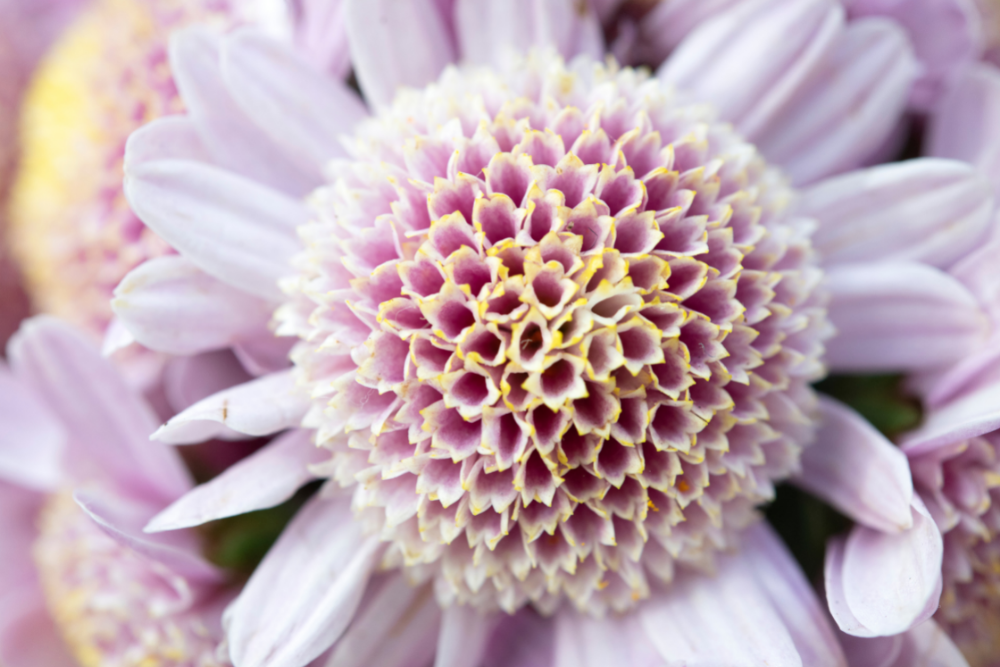
This classification showcases a large center with smaller petals.
Pompons
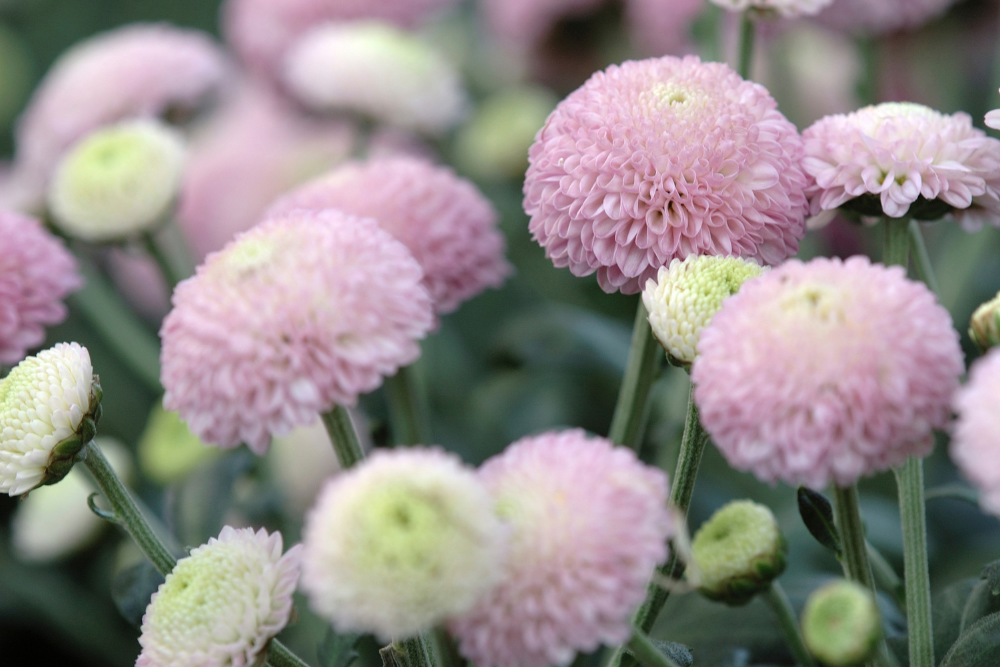
The beautiful, round blooms of the pompon classification showcase petals that are delicately folded over across the entire bloom.
Decorative Blooms
Flat, and decorative in nature. Popular varieties of this class are often used by florists.
Reflex and Incurve Blooms
Florets from this classification curve either inwards or outwards.
Reflex Mums
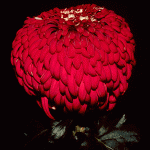
Source: https://www.mums.org/chrysanthemum-classes/
Reflex mums showcase flat centers with petals that overlap and curve downward.
Brust or Thistle Chrysanthemums
This class of mums showcase leggy petals much like the spider or the quilled blooms, however, the flowers don’t grow bigger than two inches.
Spoon Mums
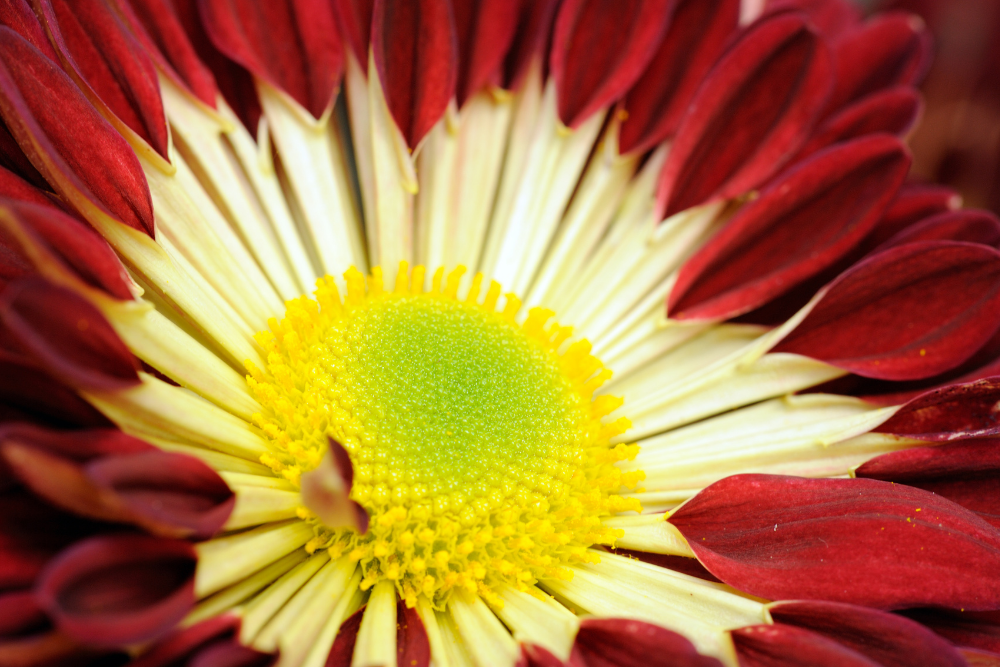
The petals of the spoon mum resemble spoons.
Cushion Mums
the name from the cushion mum comes from the way they bloom in a mound or a cushion.
(3)
Care of Chrysanthemums
When planted during the spring, your chrysanthemums will root themselves firmly in the ground and will become hardy perennials that bloom during the fall for years to come. However, when purchased at a nursery during the fall, chrysanthemums are usually treated as ornamental annuals. Because planting them so late in the year won’t serve to benefit the time they need to establish their roots in the ground, it is best to only use fall-purchased chrysanthemums as annuals.
Chrysanthemums are hardy in zones 3 through 9 and love the full sun. They will thrive in rich, humusy, moist, and well-drained soil with a pH level between 6.5-6.7. (4)
If you choose to grow chrysanthemums as a perennial that you’ll grow in the ground, plant them during the spring as soon as the soil is warm and workable. As your plant grows healthy, it may produce blooms even before fall. However, to ensure you have a beautiful mum show during the fall, simply pinch these buds off. Water your mums frequently.



